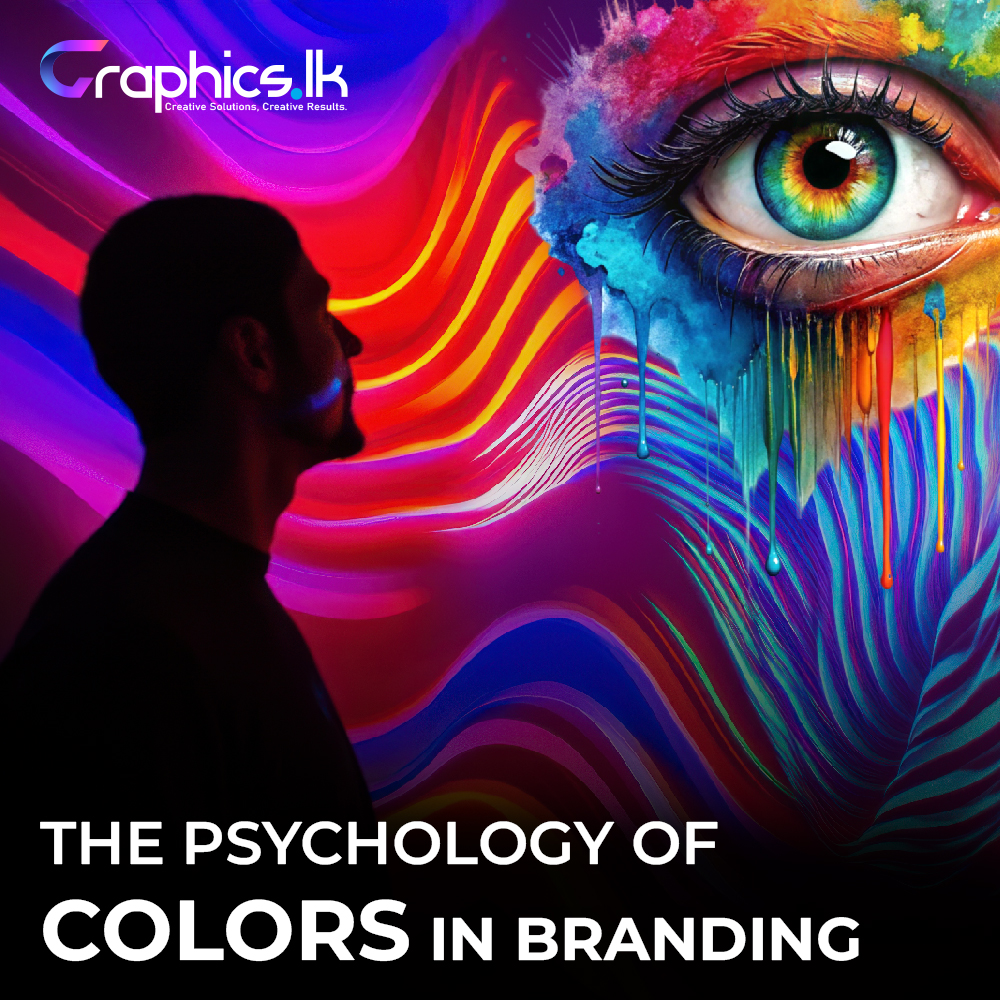
How to Choose the Right Palette – The Psychology of Colors in Branding
Introduction
Color is undeniably one of the most powerful tools in branding and design. It influences how customers perceive your brand, triggers emotions, and even impacts purchasing decisions. Therefore, choosing the right color palette for your logo, packaging, and marketing materials is crucial for building a strong brand identity.
At Graphics.lk, we specialize in creating impactful branding and design solutions that help businesses stand out. In this blog, we’ll explore the psychology of colors in branding and guide you on how to choose the right palette for your brand.
Why Color Psychology Matters in Branding
Research reveals that color can increase brand recognition by as much as 80% and influence up to 90% of a customer’s first impression. Moreover, different colors evoke distinct emotions and associations, making it essential to select colors that reflect your brand’s values and resonate with your target audience.
Here’s a breakdown of popular brand colors and their psychological impact:
🔵 Blue – Trust, Professionalism, and Reliability
Used by: Facebook, Samsung, PayPal
Blue is associated with stability, trust, and security. It’s a great choice for corporate brands, financial services, and tech companies. Consequently, it is recommended for brands that want to build customer loyalty and professionalism.
🔴 Red – Passion, Energy, and Excitement
Used by: Coca-Cola, YouTube, KFC
Red grabs attention and creates a sense of urgency and excitement. It’s often used by food, entertainment, and retail brands to stimulate appetite and engagement. Hence, it is ideal for brands that want to stand out and evoke strong emotions.
🟡 Yellow – Optimism, Happiness, and Warmth
Used by: McDonald’s, IKEA, Snapchat
Yellow represents positivity, creativity, and friendliness. It works well for brands that want to appear youthful, energetic, and welcoming. Therefore, it is ideal for food, retail, and lifestyle brands.
🟢 Green – Growth, Sustainability, and Health
Used by: Starbucks, Whole Foods, Spotify
Green is linked to nature, wellness, and eco-friendliness. It’s popular among organic, sustainable, and health-conscious brands. As a result, it is recommended for businesses that promote environmental responsibility and balance.
⚫ Black – Luxury, Elegance, and Sophistication
Used by: Chanel, Nike, Apple
Black symbolizes power, exclusivity, and modernity. It’s commonly used by luxury brands, high-end fashion, and tech companies. Consequently, it is best for brands that want to appear premium and timeless.
🟣 Purple – Creativity, Royalty, and Innovation
Used by: Cadbury, Hallmark, Yahoo
Purple is often associated with luxury, imagination, and wisdom. It’s a great choice for beauty, wellness, and innovative brands. In addition, it works well for brands that want to stand out with a unique and artistic appeal.
🟠 Orange – Playfulness, Energy, and Friendliness
Used by: Fanta, Nickelodeon, Harley-Davidson
Orange is energetic, fun, and friendly. It’s ideal for youth-oriented, entertainment, and casual brands. Thus, it works well for businesses that want to encourage excitement and enthusiasm.
How to Choose the Right Color Palette for Your Brand
Selecting the right color palette involves more than just personal preference; it’s about aligning with your brand’s personality and goals. With that in mind, follow these steps to make a well-informed choice:
Step 1: Define Your Brand Personality
Ask yourself the following questions:
✔ Is my brand professional or playful?
✔ Does it focus on luxury, affordability, or sustainability?
✔ Who is my target audience?
Step 2: Consider the Industry Trends
While blue is often a safe choice for finance and tech industries, fashion and lifestyle brands may lean toward colors like black, gold, or pink. In addition, research what top competitors in your field are using to help guide your decision.
Step 3: Use the 60-30-10 Rule
A well-balanced brand color scheme follows this simple formula:
- 60% Primary Color – Dominant brand color (e.g., Blue for Facebook)
- 30% Secondary Color – Supports the primary color (e.g., White for contrast)
- 10% Accent Color – Used for emphasis (e.g., Red for notifications)
Step 4: Test Before Finalizing
Create mock-ups of your logo, packaging, and website with different color schemes. Test how they appear in various backgrounds, print formats, and digital screens to ensure they look good across all mediums.
Step 5: Keep It Consistent
Your chosen color palette should be used consistently across all branding elements, including:
✔ Logos
✔ Business cards
✔ Website & social media
✔ Marketing materials
Color Combinations That Work Well
Here are some tried-and-tested color palettes that brands use for different messages:
🔹 Trust & Professionalism: Blue + White + Gray
🔹 Luxury & Elegance: Black + Gold + White
🔹 Eco-Friendly & Natural: Green + Brown + Beige
🔹 Energy & Creativity: Orange + Purple + Yellow
🔹 Minimal & Modern: Monochrome (Black, White, and Gray)
How Graphics.lk Can Help
At Graphics.lk, we specialize in professional branding solutions, including:
✔ Custom logo design with psychology-driven color selection
✔ Brand identity development with strategic color palettes
✔ Label & packaging design that aligns with your brand’s message
✔ Marketing materials & website graphics that enhance brand consistency
Whether you’re launching a new business or rebranding an existing one, we help you choose the perfect colors that make an impact. Contact us
For more information visit
